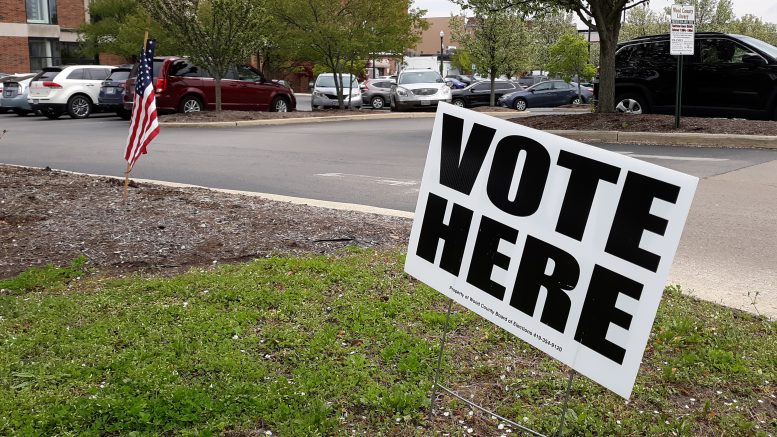By JAN LARSON McLAUGHLIN
BG Independent News
In-person voting is likely to face many challenges this November – with the biggest in Wood County expected to be a shortage of poll workers.
Ohio officials are determined to have in-person voting in November, according to Jacob Huner, from the Ohio Secretary of State’s Office.
“It has to happen,” Huner told the Wood County Commissioners on Tuesday. “We need to have in-person voting. We can’t disenfranchise folks.”
And unlike Ohio’s primary election this year, the general election will not be delayed due to the coronavirus pandemic. It would take an act of Congress to change the date from Nov. 3, Huner said.
To promote safety at the polls, workers will be provided with personal protective equipment like masks and sanitizers. But with the average age of 72 for Ohio poll workers, many of them are among the most vulnerable for COVID-19, Huner said.
Wood County Board of Elections is preparing for a possible shortage of poll workers in November, according to elections co-director Terry Burton.
“Poll workers are going to be our biggest deal this election,” he said on Tuesday. “We’re going to need to have a new crop of poll workers.”
Wood County had already dropped from about 400 poll workers to 320 after consolidating some polling locations. The number of polling locations is expected to decrease again, from about 40 to 31 this fall, since the number of people voting early and by absentee ballots continues to increase, Burton said.
But each voting location needs poll workers from both major parties. Surveys were sent out earlier to all current poll workers, to see if they would be willing to work the general election during the pandemic. At that point, 82% said they would consider working the polls.
“I understand those who have reticence,” Burton said.
Burton said the board of elections needs to get updated responses from the workers.
“There are so many factors between now and November that are going to change,” he said.
New poll workers are required to have two hours of training before working an election. They receive $25 for the training and $118 for working on election day.
“If you’re a voter, you can be a poll worker,” Burton said.
Huner talked with the county commissioners about increased election security.
“We have a huge target on our back for foreign and domestic actors who want to cause havoc,” Huner said. Last year, it was discovered that an effort was made to insert malicious code in the election results.
Voting equipment is never connected to the internet, Huner said, so while the election results aren’t compromised, the confidence of voters is undermined by such effects.
“We can confidently say Ohio’s election system is the most secure it’s ever been,” Huner said.
The state has sent some CARES funding to local boards of elections to help with preparations and security for the November election, he said. Wood County Board of Elections received $109,000.
“We want to support counties as much as we can,” Huner said.
“Eyes are all looking forward to November,” with a little over 100 days till the election, he said.
“It’s going to be a different election,” Wood County Commissioner Craig LaHote said.
Burton praised the work by Ben Hendricks, the county’s IT director, to protect elections from outside intrusion.
“We might be the most secure system in the county right now,” Burton said.
And Wood County Emergency Management Agency is helping the board of elections with providing enough PPE for workers.
“As always is the case, Wood County departments come together to solve problems,” Burton said.





